Battleship Potemkin
9.4 /10 1 Votes
100% Rotten Tomatoes Duration | 8/10 IMDb 4/4 Roger Ebert Genre History, War | |||||||||||||||||||||||||||||||||
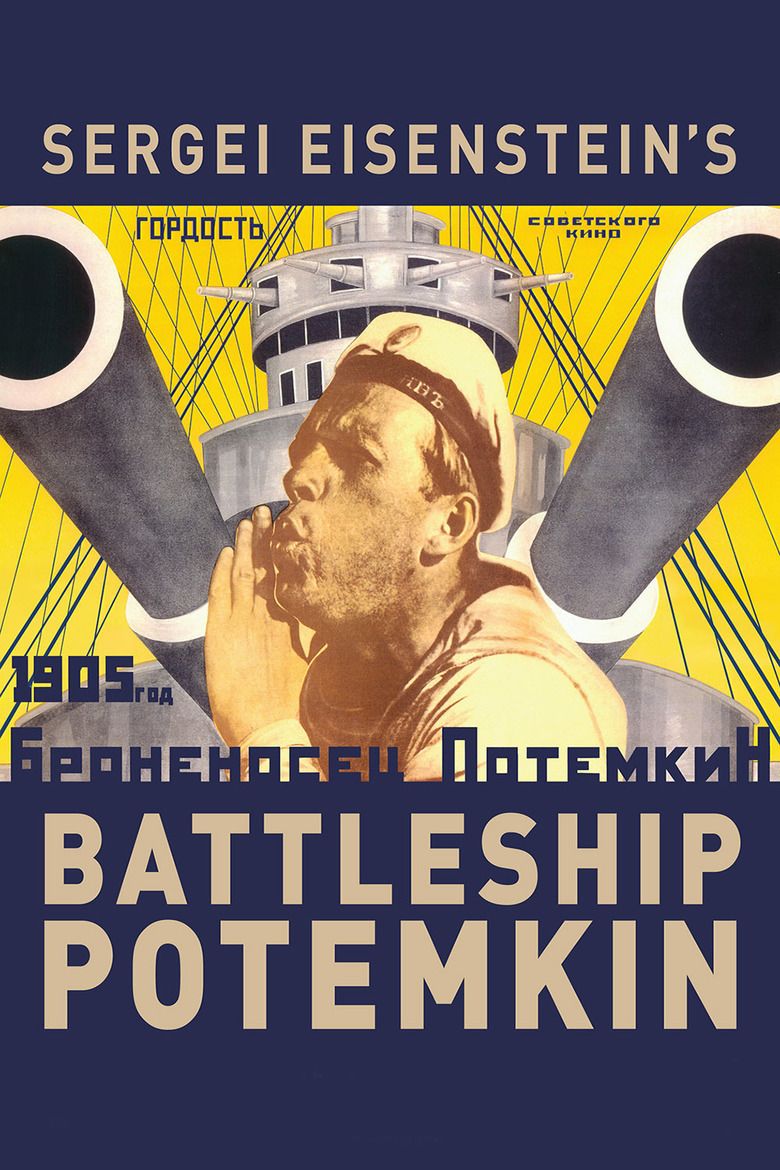 | ||||||||||||||||||||||||||||||||||
Language Silent filmRussian intertitles Writer Nikolai Aseyev , Sergei Tretyakov Release date 21 December 1925 (1925-12-21) (USSR)5 December 1926 (1926-12-05) (US) Initial release December 24, 1925 (Soviet Union) Cast (Grigory Vakulinchuk), Vladimir Barsky (Commander Golikov), (Chief Officer Giliarovsky), Ivan Bobrov (Young Sailor), Mikhail Gomorov (Militant Sailor), Aleksandr Levshin (Petty Officer)Similar movies | ||||||||||||||||||||||||||||||||||
Battleship potemkin official film trailer
Battleship Potemkin (Russian: Бронено́сец «Потёмкин», Bronenosets Patyomkin), sometimes rendered as Battleship Potyomkin, is a 1925 Soviet silent film directed by Sergei Eisenstein and produced by Mosfilm. It presents a dramatized version of the mutiny that occurred in 1905 when the crew of the Russian battleship Potemkin rebelled against their officers.
Contents
- Battleship potemkin official film trailer
- The battleship potemkin sergei eisenstein 1925 odessa steps chaos
- Plot
- Act I Men and Maggots
- Act II Drama on the Deck
- Act III A Dead Man Calls for Justice
- Act IV The Odessa Steps
- Act V One Against All
- Cast
- Production
- Film style and content
- The Odessa Steps sequence
- Treatment in other works of art
- Distribution censorship and restoration
- Soundtracks
- Critical reaction
- La corazzata Kotiomkin
- Apskaft battleship potemkin 03 drn drn nighttime in dormitory
- References
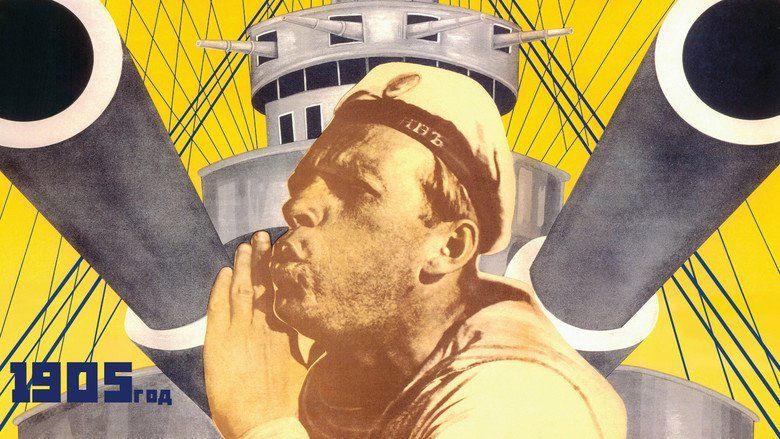
Battleship Potemkin was named the greatest film of all time at the Brussels World's Fair in 1958.
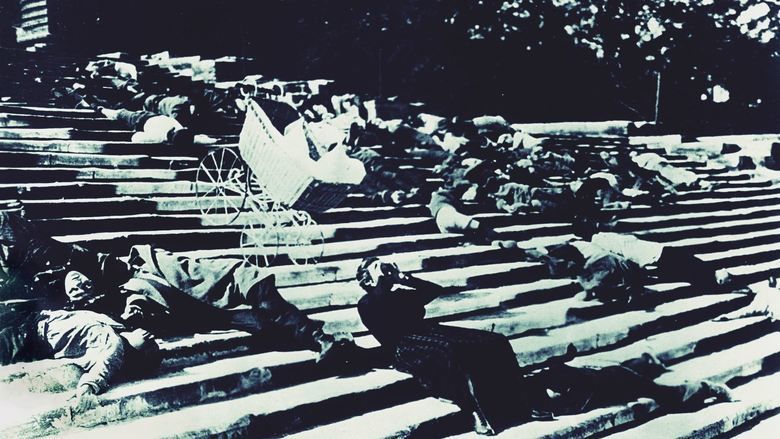
The battleship potemkin sergei eisenstein 1925 odessa steps chaos
Plot
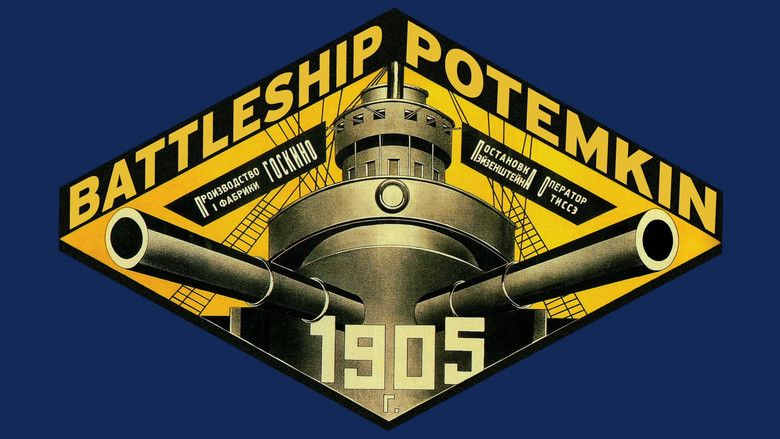
The film is set in June 1905; the protagonists of the film are the members of the crew of the Potemkin, a battleship of the Imperial Russian Navy's Black Sea Fleet. Eisenstein divided the plot into five acts, each with its own title:
Act I: Men and Maggots
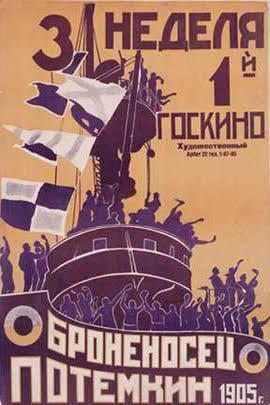
The scene begins with two sailors, Matyushenko and Vakulinchuk, discussing the need for the crew of the Potemkin to support the revolution taking place within Russia. While the Potemkin is anchored off the island of Tendra, off-duty sailors are sleeping in their bunks. As an officer inspects the quarters, he stumbles and takes out his aggression on a sleeping sailor. The ruckus causes Vakulinchuk to awake, and he gives a speech to the men as they come to. Vakulinchuk says, "Comrades! The time has come when we too must speak out. Why wait? All of Russia has risen! Are we to be the last?" The scene cuts to morning above deck, where sailors are remarking on the poor quality of the meat for the crew. The meat appears to be rotten and covered in worms, and the sailors say that "even a dog wouldn't eat this!" The ship's doctor, Smirnov, is called over to inspect the meat by the captain. Rather than worms, the doctor says that the insects are maggots, and they can be washed off prior to cooking. The sailors further complain about the poor quality of the rations, but the doctor declares the meat edible and ends the discussion. Senior officer Giliarovsky forces the sailors still looking over the rotten meat to leave the area, and the cook begins to prepare borscht although he too questions the quality of the meat. The crew refuses to eat the borscht, instead choosing bread and water, and canned goods. While cleaning dishes, one of the sailors sees an inscription on a plate which reads "give us this day our daily bread." After considering the meaning of this phrase, the sailor smashes the plate and the scene ends.
Act II: Drama on the Deck

All those who refuse the meat are judged guilty of insubordination and are brought to the fore-deck where they receive religious last rites. The sailors are obliged to kneel and a canvas cover is thrown over them as a firing squad marches onto the deck. The First Officer gives the order to fire, but in response to Vakulinchuk's pleas the sailors in the firing squad lower their rifles and the uprising begins. The sailors overwhelm the outnumbered officers and take control of the ship. The officers are thrown overboard, the ship's priest is dragged out of hiding, and finally the doctor is thrown into the ocean as 'food for the fish'.
Act III: A Dead Man Calls for Justice
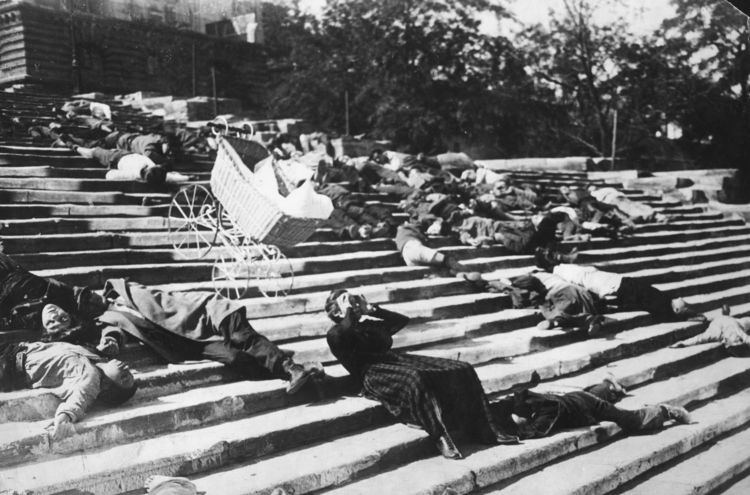
The mutiny is successful but Vakulinchuk, the charismatic leader of the rebels, is killed. The Potemkin arrives at the port of Odessa. Vakulinchuk's body is taken ashore and displayed publicly by his companions in a tent with a sign on his chest that says "For a spoonful of soup" (Изъ-за ложки борща). The sailors gather to make a final farewell and praise Vakulinchuk as a hero. The people of Odessa welcome the sailors, but they attract the police.
Act IV: The Odessa Steps

The best-known sequence of the film is set on the Odessa steps, connecting the waterfront with the central city. A detachment of dismounted Cossacks forms a line at the top of the steps and march towards a crowd of unarmed civilians including women and children. The soldiers halt to fire a volley into the crowd and then continue their impersonal, machine-like advance. Brief sequences show individuals amongst the people fleeing or falling, a baby's pram rolling down the steps, a woman shot in the face, broken spectacles and the high boots of the soldiers moving in unison.
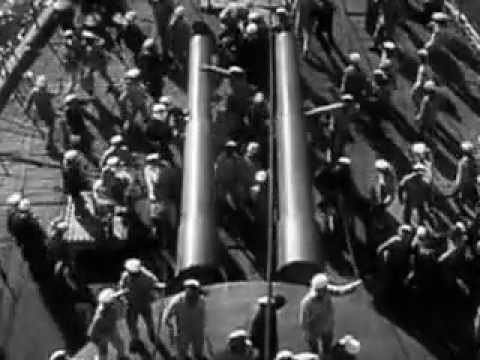
In retaliation, the sailors of the Potemkin decide to fire on a military headquarters with the guns of the battleship. Meanwhile, there is news that a squadron of loyal warships is coming to quell the revolt of Potemkin.
Act V: One Against All
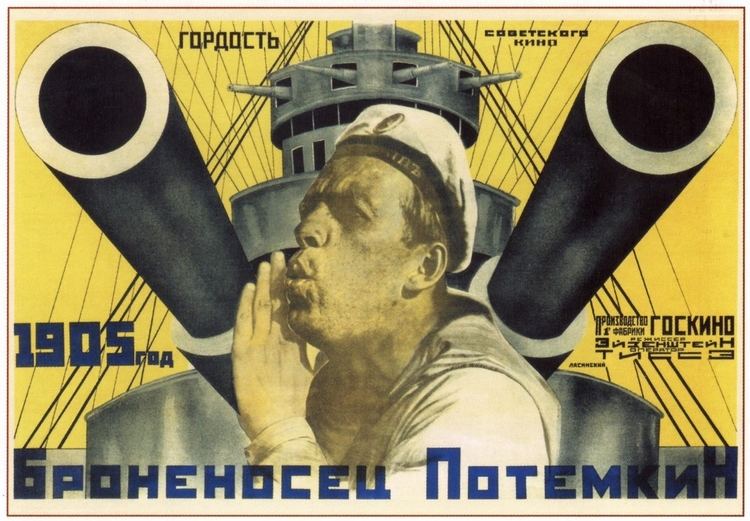
The sailors of the Potemkin decide to go all the way and lead the battleship from the port of Odessa to face the fleet of the tsar. Just when the battle seems inevitable, the sailors of the formerly loyal ships incredibly refuse to open fire on their comrades, externalizing with songs and shouts of joy their solidarity with the mutineers and allowing them to pass unmolested through the fleet, waving the red flag.
Cast
Production
On the 20th anniversary of the first Russian revolution, commemorative Commission of the Central Executive Committee decided to stage a number of performances dedicated to the revolutionary events of 1905. In addition, as part of the celebrations was suggested a "grand film shown in a special program, with an oratory introduction, musical (solo and orchestral) and a dramatic accompaniment based on a specially written text". Nina Agadzhanova was asked to write the script and direction of the picture was assigned to 27-year-old Sergei Eisenstein.
In the original script the film was to highlight a number of episodes of the 1905 revolution: Russo-Japanese War, massacre of the Armenians, revolutionary events in St. Petersburg, Moscow uprising. Filming was supposed to be conducted in a number of cities of the USSR.
Eisenstein hired many non-professional actors for the film; he sought people who had a specific type instead of famous stars.
Shooting began on March 31, 1925. Sergei began with filming in Leningrad and had time to shoot the railway strike episode, horsecar, city at night and the strike crackdown on Sadovaya Street. Further shooting was prevented by the deterioration weather: permanent fog began. At the same time the director was placed in tight time constraints: the film was needed to be finished by the end of the year, although the script was approved only at the 4th of June. Objectively assessing the situation, Sergei Eisenstein decided to give up the original script consisting of eight episodes to focus only on one – the uprising on the battleship "Potemkin", which in the all-encompassing scenario of Agadzhanova took up only a few pages (41 frames). Sergei Eisenstein together with Grigori Aleksandrov essentially recycled and extended the script. In addition during the progress of making the picture some episodes were added which were not provided by Agadzhanova's scenario or by Eisenstein's scenic sketches, such as the storm scene with which the film begins. As a result, the content of the film was very far from the original script by Agadzhanova.
The film was shot in Odessa which at that time was one of the centers of film production and where it was possible to find a suitable boat for shooting.
The first screening of the film took place December 21, 1925 at the ceremonial meeting dedicated to the anniversary of the 1905 revolution in the Bolshoi Theatre.
The premiere took place in Moscow on January 18, 1926 in the 1st Goskinoteatre (now called the Khudozhestvenny).
The silent film received a voice dubbing in 1930 (during the life of director Sergei Eisenstein), restored in 1950 (composer Nikolai Kryukov) and reissued in 1976 (composer Dmitri Shostakovich) at Mosfilm with the participation of the USSR State Film Fund and the Museum of S.M. Eisenstein under the artistic direction of Sergei Yutkevich.
In 1925, after sale of the film negative to Germany and reediting by director Phil Jutzi, "Battleship Potemkin" was released in the world in a different version of the author's intention: the shooting of sailors was moved from the beginning to the end of the film. Later it was subjected to censorship and in the USSR some frames and intermediate titles were removed, words of Leon Trotsky in the prologue were replaced with a quote from Lenin. In 2005, under the overall guidance of the Foundation Deutsche Kinemathek, with the participation of the State Film Fund and the Russian State Archive of Literature and Art, the author's version of the film was restored with the music by Edmund Meisel.
Battleship "Kniaz Potemkin Tarritcheski" later renamed "Pantemelion" then "Boretz Za Svobodu", was derelict and being scrapped at the time of the film shoot. It is usually cited that the battleship "Twelve Apostles" was used instead, but this was a very different design from Potemkin and film footage matches the Battleship Rostislav more closely. That had been scuttled in 1920 but the superstructure remained complete above the water till 1930. Interior scenes were filmed on the cruiser "Komintern". Stock footage of Potemkin class ships is used to show her at sea and stock footage of the French fleet is used to depict the waiting Russian Battlefleet, as is anachronistic footage of triple gun turrent Russian Dreadnoughts
In the film the rebels raise the red flag on the battleship but the Orthochromatic B/W film stock of that period made a red flag look black so a white flag was used instead. This was handtinted red for 108 frames by Eisenstien himself for the premiere at the Grand Theatre, which was greeted with thunderous applause by the Bolshevik audience.
Film style and content
The film is composed of five episodes:
Eisenstein wrote the film as a revolutionary propaganda film, but also used it to test his theories of montage. The revolutionary Soviet filmmakers of the Kuleshov school of filmmaking were experimenting with the effect of film editing on audiences, and Eisenstein attempted to edit the film in such a way as to produce the greatest emotional response, so that the viewer would feel sympathy for the rebellious sailors of the Battleship Potemkin and hatred for their overlords. In the manner of most propaganda, the characterization is simple, so that the audience could clearly see with whom they should sympathize.
Eisenstein's experiment was a mixed success; he "was disappointed when Potemkin failed to attract masses of viewers", but the film was also released in a number of international venues, where audiences responded positively. In both the Soviet Union and overseas, the film shocked audiences, but not so much for its political statements as for its use of violence, which was considered graphic by the standards of the time. The film's potential to influence political thought through emotional response was noted by Nazi propaganda minister Joseph Goebbels, who called Potemkin "a marvelous film without equal in the cinema ... anyone who had no firm political conviction could become a Bolshevik after seeing the film". He even was interested in getting Germans to make a similar film. Eisenstein did not like the idea and wrote an indignant letter to Goebbels in which he stated that National Socialistic realism did not have either truth or realism. The film was not banned in Nazi Germany, although Himmler issued a directive prohibiting SS members from attending screenings, as he deemed the movie inappropriate for the troops. The film was eventually banned in some countries, including being banned at various times in both the United States and France, as well as in its native Soviet Union. The film was banned in the United Kingdom longer than any other film in British history.
The Odessa Steps sequence
One of the most celebrated scenes in the film is the massacre of civilians on the Odessa Steps (also known as the Primorsky or Potemkin Stairs). This sequence has been assessed as a "classic" and one of the most influential in the history of cinema. In the scene, the Tsar's soldiers in their white summer tunics march down a seemingly endless flight of steps in a rhythmic, machine-like fashion, firing volleys into a crowd. A separate detachment of mounted Cossacks charges the crowd at the bottom of the stairs. The victims include an older woman wearing pince-nez, a young boy with his mother, a student in uniform and a teenage schoolgirl. A mother pushing an infant in a baby carriage falls to the ground dying and the carriage rolls down the steps amidst the fleeing crowd.
The massacre on the steps, although it never actually took place, was based on the fact that there were widespread demonstrations in the area, sparked off by the arrival of the Potemkin in Odessa Harbour, and both The Times and the resident British Consul reported that troops fired on the crowds; deaths were reportedly in the hundreds. Roger Ebert writes, "That there was, in fact, no tsarist massacre on the Odessa Steps scarcely diminishes the power of the scene ... It is ironic that [Eisenstein] did it so well that today, the bloodshed on the Odessa steps is often referred to as if it really happened."
Treatment in other works of art
The scene is perhaps the best example of Eisenstein's theory on montage, and many films pay homage to the scene, including Terry Gilliam's Brazil, Francis Ford Coppola's The Godfather, Brian De Palma's The Untouchables, George Lucas' Star Wars: Episode III – Revenge of the Sith, Tibor Takacs' Deathline, Laurel and Hardy's The Music Box, Chandrashekhar Narvekar's Hindi film Tezaab, Shukō Murase's anime Ergo Proxy, and The Magic Christian. Several films spoof it, including Woody Allen's Bananas and Love and Death, Zucker, Abrahams, and Zucker's Naked Gun 33⅓: The Final Insult (though actually a parody of The Untouchables), Soviet-Polish comedy Deja Vu, Jacob Tierney's The Trotsky and the Italian comedy Il secondo tragico Fantozzi. The 2011 October Revolution parade in Moscow featured a homage to the film.
The Irish-born painter Francis Bacon (1909–1992) was profoundly influenced by Eisenstein's images, particularly the Odessa Steps shot of the nurse's broken glasses and open mouthed scream. The open mouth image appeared first in his Abstraction from the Human Form, in Fragment of a Crucifixion, and other works including his famous Head series.
The Russian-born photographer and artist Alexey Titarenko was inspired by and paid tribute to the Odessa Steps sequence in his series "City Of Shadows" (1991–1993), shot near the subway station in Saint Petersburg.
Distribution, censorship and restoration
After the first screening the film was not distributed in the Soviet Union and there was a danger that it would be lost among other productions. Poet Vladimir Mayakovsky intervened because his good friend, poet Nikolai Aseev participated in the making of the film’s intertitles. Mayakovsky’s opposing party was Sovkino’s president Konstantin Shvedchikov. He was a politician and friend of Vladimir Lenin who once hid Lenin in his home before the Revolution. He had a primitive taste in film and was an anti-Semite who disliked Eisenstein for his Jewish background. Mayakovsky presented Shvedchikov with a hard demand that the film would be distributed abroad and intimidated Shvedchikov with the fate of becoming a villain in history books. Mayakovsky's closing sentence was "Shvedchikovs come and go, but art remains. Remember that!" Besides Mayakovsky many others also persuaded Shvedchikov to spread the film around the world and after constant pressure from Sovkino he eventually sent the film in Berlin. There Battleship Potemkin became a huge success, and the film was again screened in Moscow.
When Douglas Fairbanks and Mary Pickford visited Moscow in July 1926, they were full of praise regarding Battleship Potemkin and Fairbanks helped distribute the film in the United States and even asked Eisenstein to go to Hollywood. In the United States the film premiered in New York on the 5th of December 1926 at the Biltmore Theatre.
It was shown in an edited form in Germany, with some scenes of extreme violence edited out by German distributors. A written introduction by Trotsky was cut from Soviet prints after he ran afoul of Stalin. The film was banned in West Germany, the United Kingdom (until 1954 and X-rated until 1978), France, and other countries for its revolutionary zeal.
Today the film is widely available in various DVD editions. In 2004, a three-year restoration of the film was completed. Many excised scenes of violence were restored, as well as the original written introduction by Trotsky. The previous titles, which had toned down the mutinous sailors' revolutionary rhetoric, were corrected so that they would now be an accurate translation of the original Russian titles.
Soundtracks
To retain its relevance as a propaganda film for each new generation, Eisenstein hoped the score would be rewritten every 20 years. The original score was composed by Edmund Meisel. A salon orchestra performed the Berlin premiere in 1926. The instruments were flute/piccolo, trumpet, trombone, harmonium, percussion and strings without viola. Meisel wrote the score in twelve days because of the late approval of film censors. As time was so short Meisel repeated sections of the score. Composer/conductor Mark-Andreas Schlingensiepen has reorchestrated the original piano score to fit the version of the film available today.
Nikolai Kryukov composed a new score in 1950 for the 25th anniversary. In 1985, Chris Jarrett composed a solo piano accompaniment for the movie. In 1986 Eric Allaman wrote an electronic score for a showing that took place at the 1986 Berlin International Film Festival. The music was commissioned by the organizers, who wanted to commemorate the 60th anniversary of the film's German premiere. The score was played only at this premiere and has not been released on CD or DVD. Contemporary reviews were largely positive apart from negative comment because the music was electronic. Allaman also wrote an opera about Battleship Potemkin, which is musically separate from the film score.
In commercial format, on DVD for example, the film is usually accompanied by classical music added for the "50th anniversary edition" released in 1975. Three symphonies from Dmitri Shostakovich have been used, with No. 5, beginning and ending the film, being the most prominent.
In 2007, Del Rey & The Sun Kings also recorded this soundtrack. In an attempt to make the film relevant to the 21st century, Neil Tennant and Chris Lowe (of the Pet Shop Boys) composed a soundtrack in 2004 with the Dresden Symphonic Orchestra. Their soundtrack, released in 2005 as Battleship Potemkin, premiered in September 2004 at an open-air concert in Trafalgar Square, London. There were four further live performances of the work with the Dresdner Sinfoniker in Germany in September 2005 and one at the Swan Hunter ship yard in Newcastle upon Tyne in 2006.
The avant-garde jazz ensemble Club Foot Orchestra has also re-scored the film, and performed live accompanying the film. For the 2005 restoration of the film, under the direction of Enno Patalas in collaboration with Anna Bohn, released on DVD and Blu-ray, the Deutsche Kinemathek - Museum fur Film und Fernsehen, commissioned a re-recording of the original Edmund Meisel score, performed by the Babelsberg Orchestra, conducted by Helmut Imig. In 2011 the most recent restoration was completed with an entirely new soundtrack by members of the Apskaft group. Contributing members were AER20-200, awaycaboose, Ditzky, Drn Drn, Foucault V, fydhws, Hox Vox, Lurholm, mexicanvader, Quendus, Res Band, -Soundso- and speculativism. The entire film was digitally restored to a sharper image by Gianluca Missero (who records under the name Hox Vox). The new version is available at the Internet Archive.
The most recent, new, score for Battleship Potemkin was composed in 2011 by Michael Nyman and is regularly performed by the Michael Nyman Band.
Critical reaction
Battleship Potemkin has received universal acclaim from modern critics. On review aggregate website Rotten Tomatoes, the film holds an overall 100% "Certified Fresh" approval rating based on 44 reviews, with a rating average of 9.1 out of 10. The site's consensus reads, "A technical masterpiece, Battleship Potemkin is Soviet cinema at its finest, and its montage editing techniques remain influential to this day." Since its release, Battleship Potemkin has often been cited as one of the finest propaganda films ever made and considered amongst the greatest films of all time. The film was named the greatest film of all time at the Brussels World's Fair in 1958. Similarly, in 1952, Sight & Sound magazine cited The Battleship Potemkin as the fourth greatest film of all time and has been voted within the top ten in the magazine's five subsequent decennial polls, dropping to number 11 in the 2012 poll.
In 2007, a two-disc, restored version of the film was released on DVD. Time magazine's Richard Corliss named it one of the Top 10 DVDs of the year, ranking it at #5. It ranked #3 in Empire's "The 100 Best Films Of World Cinema" in 2010. In April 2011, Battleship Potemkin was re-released in UK cinemas, distributed by the British Film Institute. On its re-release, Total Film magazine gave the film a five-star review, stating: "...nearly 90 years on, Eisenstein’s masterpiece is still guaranteed to get the pulse racing."
Directors Orson Welles, Michael Mann and Paul Greengrass placed Battleship Potemkin on their list of favorite films.
Director Billy Wilder has named Battleship Potemkin as his favourite film of all time.
La corazzata Kotiomkin
In Italy this film is very famous because it appears in the comedy film Il secondo tragico Fantozzi as "Sergej Einstein" (a play on "Sergej Eisenstein" and "Albert Einstein")'s La corazzata Kotiomkin ("The dreadnought Kotiomkin"), a very boring film that Ugo Fantozzi and his colleagues are forced to watch many times because one of their managers is an enthusiast of this film.
Apskaft battleship potemkin 03 drn drn nighttime in dormitory
References
Battleship Potemkin WikipediaThe Battleship Potemkin IMDbThe Battleship Potemkin Rotten TomatoesThe Battleship Potemkin Roger EbertBattleship Potemkin themoviedb.org
